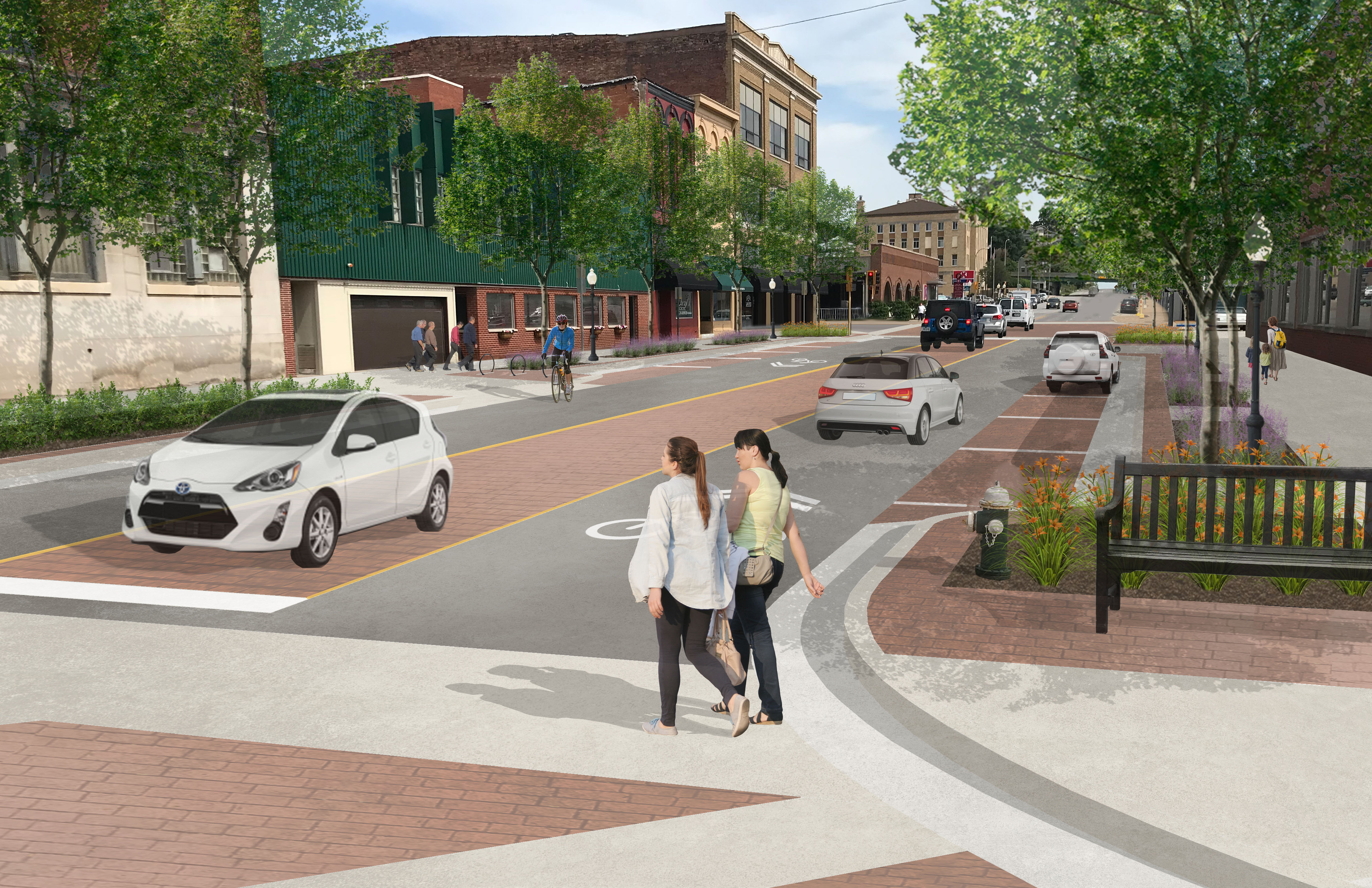The cities of Burlington, IA; Hattiesburg, MS; and Rochester, NH all requested assistance from the U.S. Environmental Protection Agency’s (EPA’s) Greening America’s Communities Program to transform their downtown streets into green and complete streets.
The city of Burlington’s request focused on two streets in the downtown: North Main Street and Washington Street. Community concerns included the lack of adequate pedestrian and bicycle connections among downtown areas, nearby neighborhoods, and the Mississippi River area; a lack of community identity in this portion of town; stormwater runoff and subsequent water pollution and localized flooding; and general unattractiveness at the focus site areas.
The city of Hattiesburg’s request focused on two areas in the downtown: Edwards Street and Duncan Lake Park. Community concerns included the lack of adequate pedestrian and bicycle connections among the Edwards Street corridor, especially to the police complex to the north and William Carey University to the southwest; stormwater runoff and subsequent water pollution and localized flooding; an economically depressed mixed-use neighborhood; and general unattractiveness at the focus site areas.
The city of Rochester’s request focused on two areas in the downtown: North Main Street and Downtown municipal parking lot. Community concerns included the lack of adequate pedestrian and bicycle connections in the downtown, especially between the neighborhoods east and west of the Cocheco River; stormwater runoff and subsequent water pollution and localized flooding; and the desire to enhance the attractiveness of the downtown to support local businesses.
It was the hope of the communities that designing for these goals could help spur local art scenes; boost the desire for downtown living; encourage redevelopment of brownfields and infill properties to reduce the vacancy rate; provide the community with green and complete designs that will improve pedestrian circulation routes; manage stormwater responsibly; and revitalize downtown. The revised design options specifically address these goals by including new walk and cycling routes, crosswalks, landscaped medians, street trees, stormwater swales, stormwater planters, and more attractive wayfinding and neighborhood identifying elements. Stockwell summarized all of these findings into a final report for each community with plan renderings, street-level perspectives, next steps, and local examples. These reports help to form the foundation for applying green infrastructure elements into other areas of the community.






